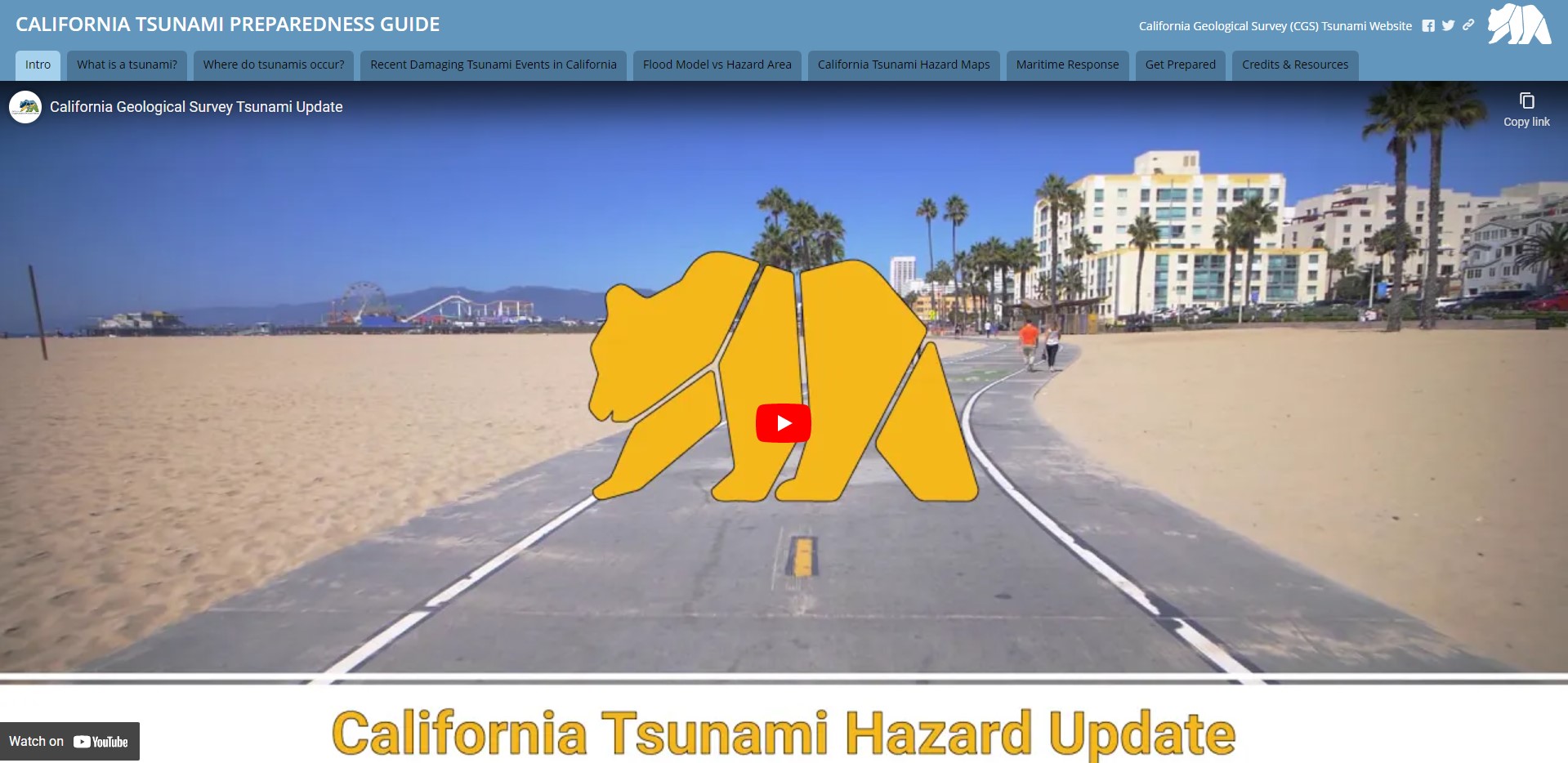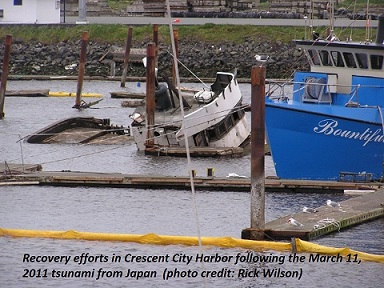
On this page:
How to Prepare for a Tsunami
Education and preparation are the best ways to avoid injury and increase your chances for survival. Whether you live, work, or visit in California, it is important to be aware that the coastal region is vulnerable to tsunamis. Tsunamis can be generated locally or come across the ocean great distances.
California’s large active offshore faults and unstable submarine slopes can cause tsunami activity along the coast. Strong ground shaking from an earthquake is the natural warning that a tsunami might be coming. If you are on the beach or in a harbor and feel an earthquake, immediately move inland or go to high ground. If strong shaking lasts for 20 seconds or more, everyone within the tsunami evacuation area should evacuate as soon as it is safe to do so.
Other natural warnings include seeing the ocean quickly recede to expose the ocean bottom, or hearing an unusually loud roar coming from the ocean. A tsunami can arrive within minutes and may last for several hours.
For tsunamis coming from across the ocean, local communities use a variety of communication methods to broadcast emergency information. Be informed on what signals, sirens, and public services will be employed for your area. Practice tsunami evacuation drills.
Know whether you are in a potential tsunami zone by observing street signs or looking online to see if you are in a zone. Know the evacuation routes for your area. Contact your local city and/or county government to see what the evacuation plan is for your area and where you will be expected to evacuate to. Have a “Go bag” ready, in the event you have to evacuate. Do not return to the evacuated zone until officials tell you it is safe to do so. The first tsunami is not always the largest, and tsunami waves, flooding and strong currents can last for several hours.
Maritime Preparedness

Tsunami Preparedness Brochure for Recreational and Commercial Boaters
The California Tsunami Program has produced a tsunami preparedness brochure for recreational and commercial boaters. The March 11, 2011 tsunami caused nearly $100M in damage to the California maritime community. This brochure will help educate individual boaters about how they should prepare BEFORE the next tsunami arrives on our coast.
Maritime Tsunami Response Playbooks
Research indicates that a large tsunami from the Alaska-Aleutian Islands region could cause one third of the boats in California to be damaged or sunk and two thirds of the docks to be damaged or destroyed. Although the impacts from tsunamis cannot be completely eliminated, they can be significantly reduced by improving tsunami planning and response activities. Over the past several years, the California Geological Survey, the California Office of Emergency Services, and the University of Southern California have been working with harbormasters and port captains to develop guidance for maritime response to future tsunamis. In partnership with the Federal Emergency Management Agency, California has started developing tsunami “playbooks” that will help these harbors and ports respond to tsunamis of various sizes coming from sources around the Pacific Ocean. The following references provide further details about the work these partners are doing to help harbors and ports to prepare:
Back to the Tsunamis home page
Web page by:
California Geological Survey - Seismic Hazards Program
